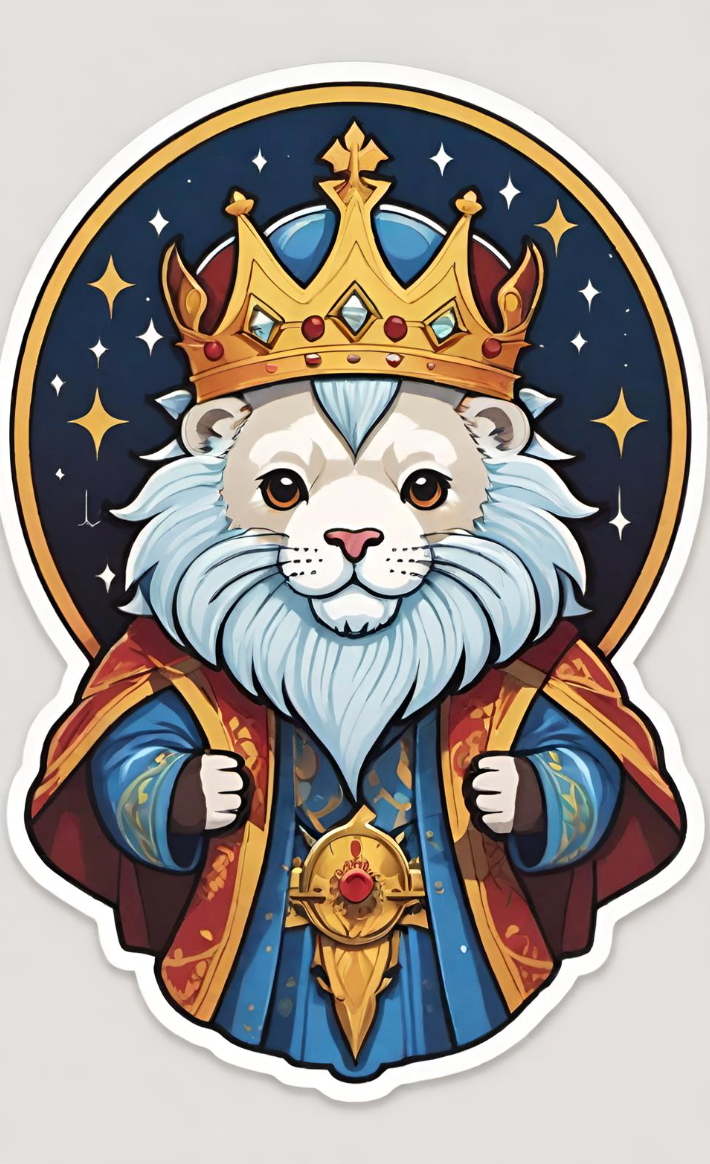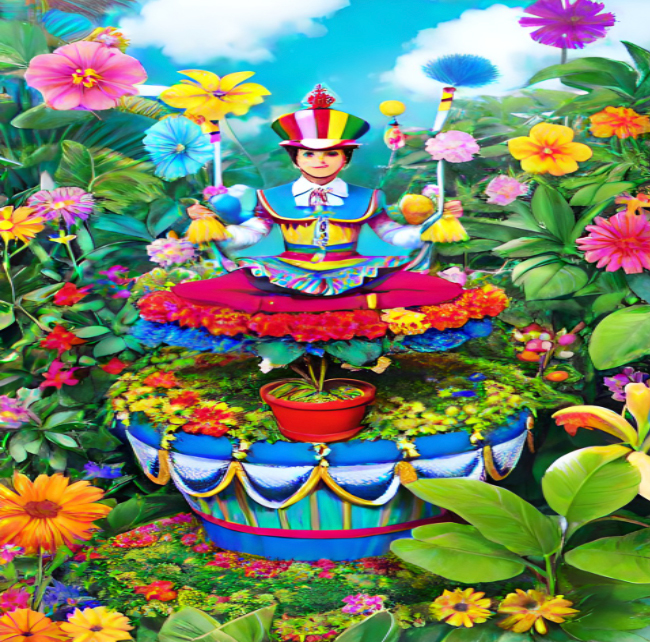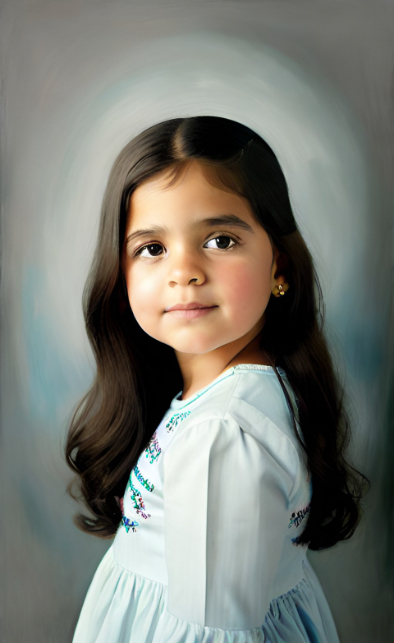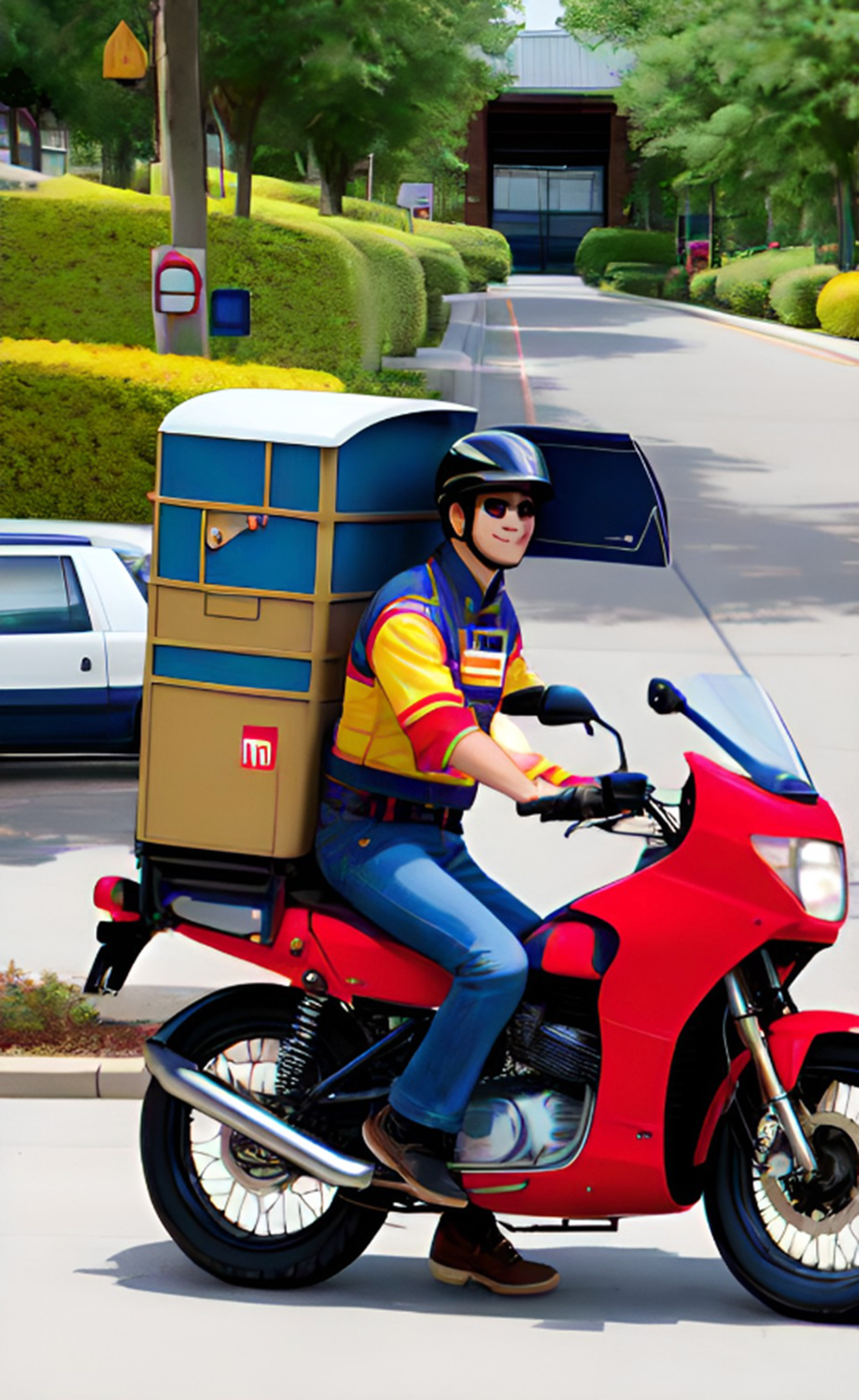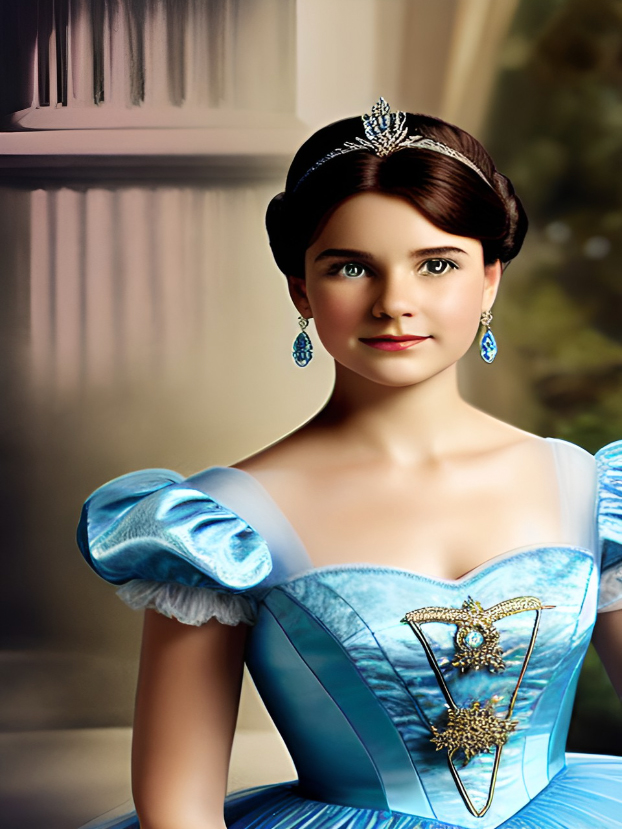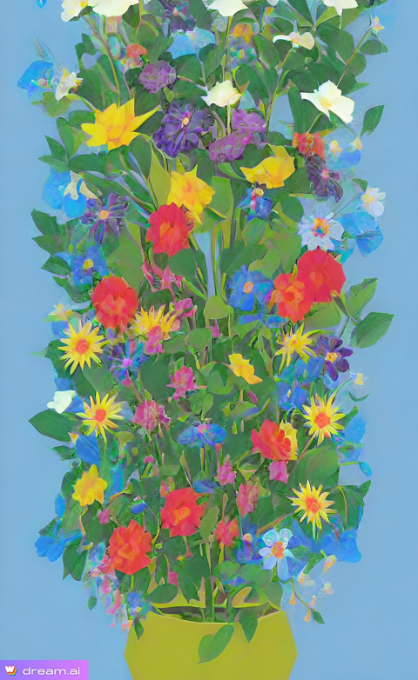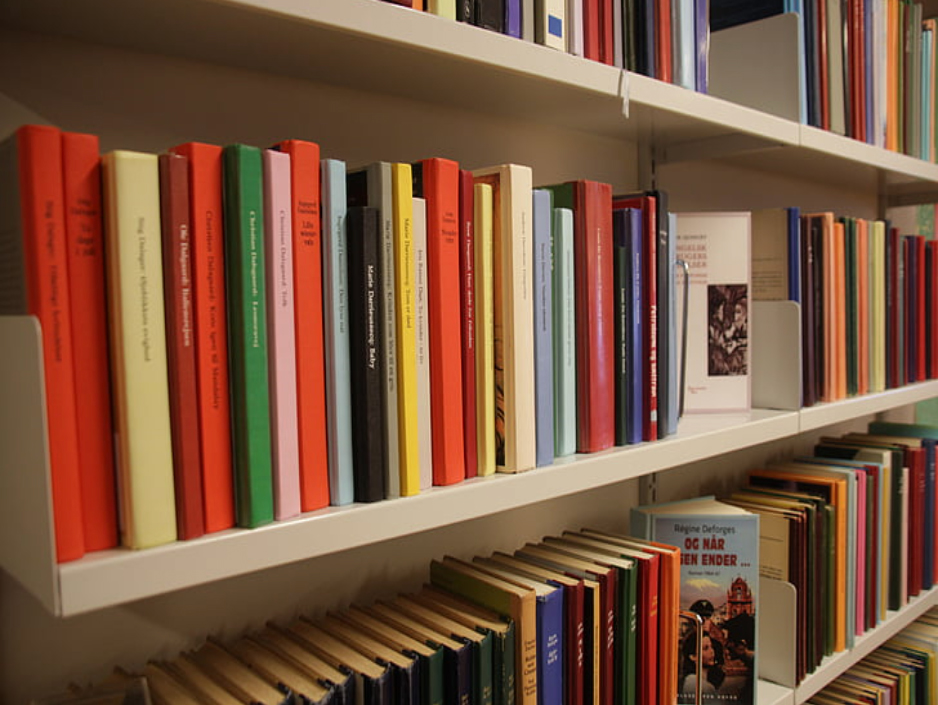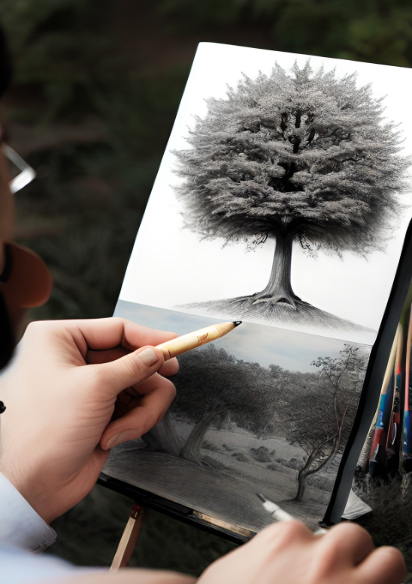In this interdisciplinary project, two subjects are involved with the Information and Communication Technology (ICT) teacher inviting the Portuguese Language teacher to create and innovate with AI. ICT teacher Artur incorporates specific generative AI tools, such as Gemini for text creation and Wombo Dream for illustrations. During four ICT classes, students work on narrative texts initiated in Portuguese Language classes, using AI to expand their stories and generate corresponding illustrations. The goals are to enhance writing skills and stimulate creativity through technology, foster critical thinking, and increase awareness of AI’s impacts and potentials.

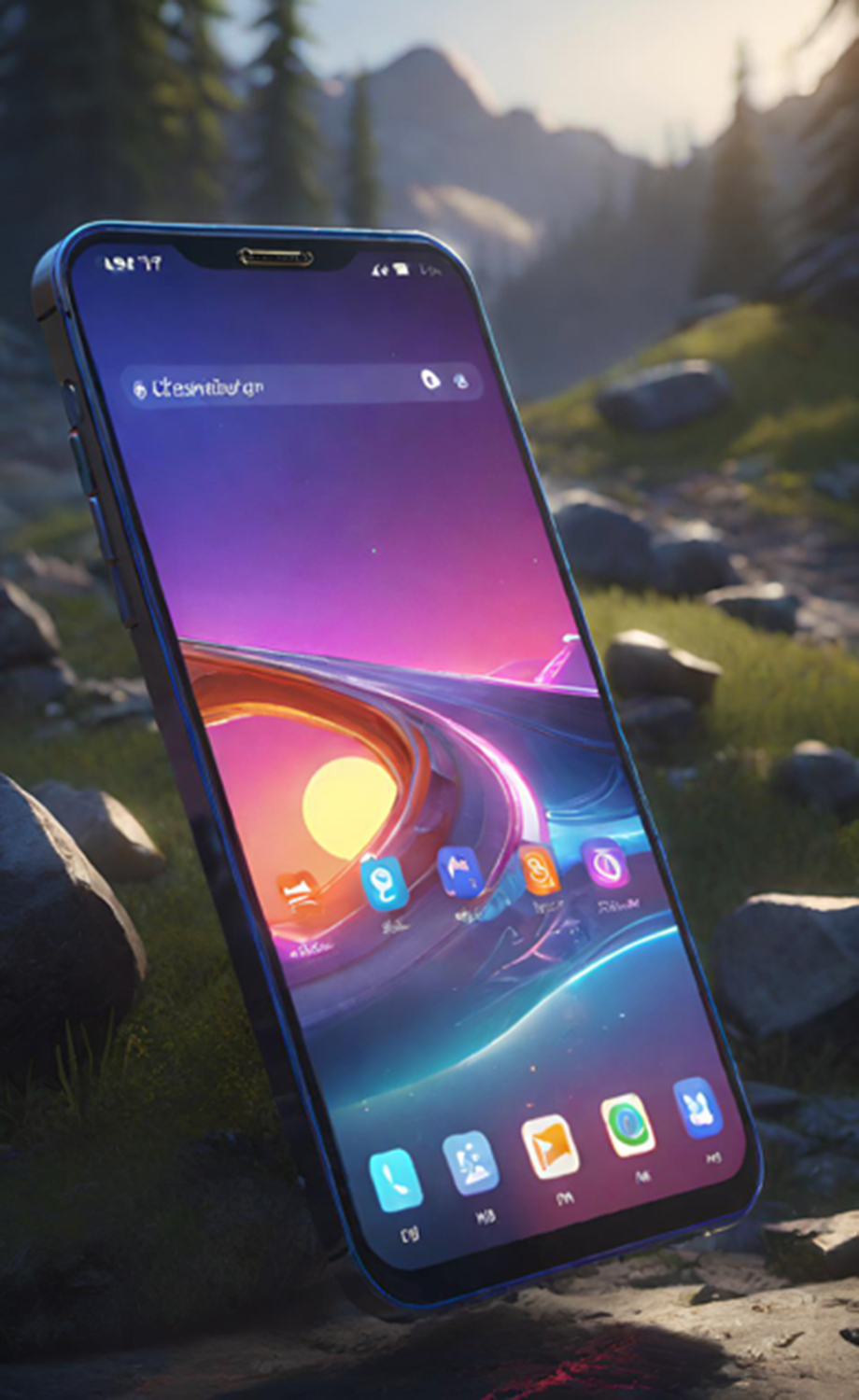




Teacher Artur starts with an explanation of what AI is, focusing on the use of Large Language Models (LLM). He demonstrates the functionality of Gemini, an AI tool that integrates into the school’s Google Workspace, using prompt examples that illustrate how different levels of detail influence the outcomes.
Prompt Creation
The theacher facilitates a moment where students participate in a class brainstorming session to develop prompts.
Initially, they define situations and characters. The teacher writes the prompt in Gemini and everyone observes and discusses the results. They then refine these prompts to guide the tool to generate results aligned with what is desired.
Reflection
At the end of the class, the students reflect on:
- the collaborative potential of AI tools
- the importance of actively interacting with these technologies
- the risks associated with their use being restricted to merely obtaining answers to questions
The collaboration with the Portuguese Language teacher allowed the integration of literary content into the ICT curriculum. The main activities of this class focus on:
- Transcription and typing: Students start by typing the story they developed earlier.
- Text formatting: Students apply text styles, adjust paragraphs, and choose fonts, practicing basic formatting rules.
- Document sharing: Learn to use and share documents on Google Workspace, facilitating collaboration and teacher feedback as editor of these documents.
The formatted text in this class will be used as the first prompt in Gemini in the next class, linking ICT skills directly with creativity in writing and AI technology.
Some prompts produced and formatted by the students:
Prompt by student Constança B.
“On any given day, in the hustle and bustle of life, Renata, a smart girl full of knowledge about the world, received a cellphone. She was overjoyed as her friends already had one, and she was the only one without, until that day. But when the girl touched the phone, she got a fright.”
Prompt by student Mel L.
“Once upon a time, there was a car that came from the future, it was multi-colored, with pink wings and purple lights. On one of its outings, it saw a beautiful colorful forest and a bright, shiny flower. With it, it made a tasty tea, went to bed, and slept through the night.”
Prompt by student Matilde N.
“Today I woke up with a smile from ear to ear. Something had happened that I had been waiting for so long. I remember what I dreamed! It was incredible! What a great journey I had to the land of dreams where everything was pink, where clouds were made of cotton candy and flowers were gummy candies. People were cheerful and friendly, and children played happily in the streets and parks, without fears or worries.”
Prompt by student Miguel L.
“Once upon a time, there was a lady who lived in a cabin in the middle of the forest. Every morning her paints disappeared because of a thief. But the thief did not steal just any paint. Lady Helena (that was the name of the lady who lived in the cabin) had her paints in a specific order: red, green, blue, purple, pink, and yellow, and the thief, even if the lady changed the order of the paints, always stole the yellow.”
The main activities of this lesson involve:
- Initiation: Students access Gemini and start by copying their original text (partial or full) to use as the initial prompt.
- Interaction with AI: Students are asked to add specific instructions for the AI to continue the story.
- Review and Editing: After receiving the texts generated by the AI, students decide whether to accept, reject, or modify the content.
- Final Compilation: When satisfied with the results, students add the new text to the original document, forming a complete narrative.
This class allows students to directly experiment with AI technology and develop their creative and critical writing skills by evaluating and adapting machine-generated content. They learn to integrate AI in a significant way and controlled by them.
For some students, generating images with the help of AI was a familiar experience. However, to familiarize everyone with the Wombo Dream tool to be used in this class, the teacher prepared the following main activities:
- Introduction to Wombo Dream: A brief demonstration of how to use the tool, highlighting its features and capabilities.
- Creating Images: Students will use the text of their stories as input for Wombo Dream to create images that represent the narrative themes and elements described.
- Discussion and Analysis: Students will discuss how the generated images relate to their stories, analyzing the accuracy and creativity of the AI in visual representation.
- Editing and Refinement: Students will have the opportunity to refine their prompts or adjust settings to tweak the images, learning how different inputs can alter the outcomes.
- Compiling and Sharing: The final images will be added to their documents, and students will learn how to format and share these documents in a presentable manner within the class or for wider audience.
This lesson not only introduces students to innovative AI technology but also enhances their understanding of how textual narratives can be visually represented, blending creative writing with digital art skills.
Final Stories and Illustrations Created by Students in Collaboration with AI
The first paragraph of all the stories also serves as the prompt that students used to initiate their interaction with the AI tools Gemini e Wombo Dream.
To read all the stories created by the students, follow this link to stories in Portuguese (please translate into your preferred language, it’s worth the read!).
Bellow are two stories created by students:

The avenue of happy people
Daniela S.
Once upon a time, there was a very happy avenue where everyone was happy. The people were friends with each other and every Saturday they would have a party just to celebrate their friendship. At one of these parties, it was a friend’s birthday, and the party was even bigger, with more food and balloons. Then they turned off the lights, and the birthday friend was surprised by what he saw when the lights came on. It was a surprise party. Everyone started singing “Happy Birthday to You,” and the friend cried, moved and happy.
The lights came on, and the birthday friend was astonished. The avenue was decorated with colorful balloons, flags, and blinking lights. There was a huge cake in the center of the table, with lit candles and a big “Congratulations!” written in chocolate. All his friends were there, smiling and singing for him.
He couldn’t believe it. It was the most incredible surprise party he had ever seen. His eyes filled with tears of happiness. He never imagined his friends would do something so special for him.
As everyone sang “Happy Birthday to You,” he hugged each of his friends tightly. He felt very loved and lucky to have such special people in his life.
After the song, everyone ate cake and talked animatedly. The birthday friend told funny stories from his childhood, and everyone laughed together. It was a magical night that he would never forget.
At the end of the party, he thanked all his friends for making that day so special. He said he was very happy to live on that avenue, where everyone was so friendly and united. From that day on, the surprise party became a tradition on the avenue. Every year, on the birthday of one of the friends, they organized a surprise party for him. It was a way to celebrate their friendship and the joy of living together.

The cell phone that disliked people
Constança B.
One day, in the hustle and bustle of life, Renata, a smart girl full of knowledge about the world, received a cell phone. She was overjoyed since all her friends already had one, and until that day, she was the only one who didn’t. But when the girl touched the phone, she got a shock.
– Why are you attacking me? – the cell phone asked – You’re hurting me! And why are you so different from me?
– Oh! I’m your owner, and from now on, I want you to respect me!!!
– I’m sorry, I didn’t mean to hurt you.
They were interrupted by Renata’s mother:
– Come to lunch, miss!
Renata was astonished by the cell phone’s response. She had never imagined that a device could talk, let alone complain about being touched. But, as she was a smart and curious girl, she decided to try to understand what was going on.
“Why don’t you like people?” she asked carefully.
“People are bad,” the cell phone replied. “They use me for bad things, like spreading lies, bullying, and even violence. I don’t want to be used for that.”
Renata was saddened by the cell phone’s response. She knew people could be bad, but she also knew there were many good people in the world. “Not all people are bad,” she said. “There are many good people who can use you for good things, like learning, communicating with others, and even helping others.”
The cell phone was silent for a moment, as if thinking about what Renata had said. “Maybe you’re right,” it finally said. “But I am still afraid of people.”
“I understand your fear,” said Renata. “But I promise you that I will use you for good. I will use you to learn, to communicate with my friends and family, and to help others.”
The cell phone smiled. “Okay,” it said. “I will give you a chance.”
From that day on, Renata and the cell phone became friends. Renata used the cell phone for good things, like learning, communicating with her friends and family, and helping others. The cell phone was happy to be used for good and stopped being afraid of people.
One day, Renata was using the cell phone to help a friend who was being bullied. The cell phone recorded the conversation between Renata’s friend and the bullies, and Renata sent the recording to the school. The school punished the bullies, and Renata’s friend was freed from bullying.
The cell phone was proud of itself for helping Renata assist her friend. It realized that it could be used for good and that it didn’t need to be afraid of people.
From that day on, the cell phone became an advocate for bullying victims. It helped many children to be free from bullying and became a symbol of hope for all those who suffered from bullying.
Illustrations
To read and see all the stories and illustrations created by the students, follow this link to stories in Portuguese (please translate into your preferred language).





